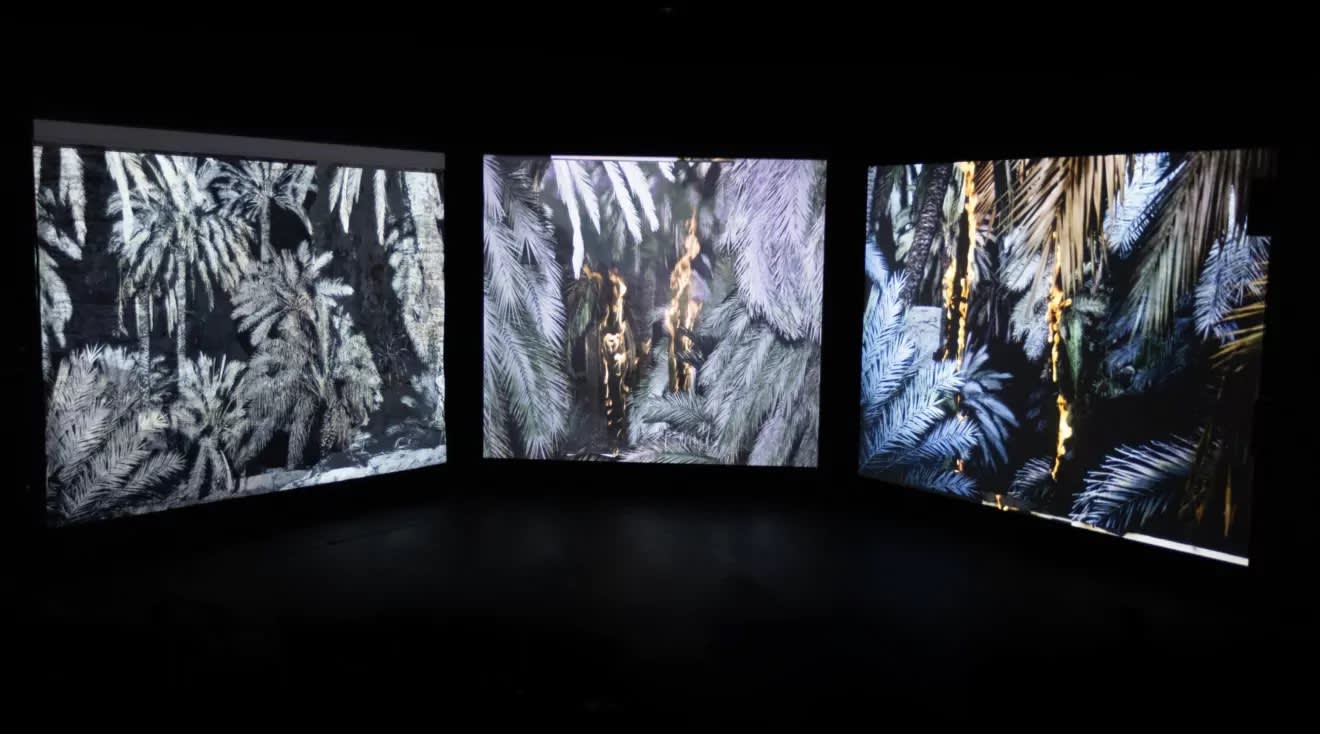
Photo Vincent Arbelet
Artists strike, sometimes, where they are not expected. This is the case of Maëlle Poésy who, on the occasion of this 76th Festival d'Avignon, leaves her theatrical comfort zone to try her hand at the field of immersive performance. To succeed in her bet, the director, director of the Dijon-Bourgogne Theater, did not leave alone, with a flower in her hand. She has teamed up with photographer Noémie Goudal who, for many years, has been interested in the work of paleoclimatologists, those scientists who dig into the climatic past to try to anticipate future changes . This quest gave birth to a photographic corpus, Les Mécaniques , and an exhibition , Post Atlantica, which serves as the basis for their joint creation, ANIMA .
Installed in the middle of three giant screens in the Cour Montfaucon of the Lambert Collection – which had already hosted, last year, Théo Mercier's superb installation , Outremonde –, the spectators face three similar landscapes: thousand-year-old date palms , inherited from the time of the Green Sahara, whose permanence does not seem, at first sight, indisputable. In the image, technicians suddenly invite themselves who, by reproducing the creative process of this work by Noémie Goudal called Phoenix, model and recompose the landscape as they please, with a gesture worthy of the Devil's hand rather than that of of God.
Because, soon, their additions catch fire, and eat away little by little, layer after layer, like so many epochs of the planetary climate, these superimposed photos of date palms, until transforming this luxuriant region into a purely lunar desert, covered with ashes. During this time, on the screen furthest to the left of the scene, not subjected to the flames, water begins to pierce the canvas to better shred the water-soluble paper. Appearing in the meantime on the image, the hills with the seemingly intangible rock do not then gradually disintegrate to give way to a chasm of water which, alongside the minerality of the two other landscapes of the triptych, still gives to appreciate a different panorama. .
While the force of the natural elements - water, fire... - is unleashed and undermines the supposed permanence of landscapes in the eyes of men, the music of Chloé Thévenin, steeped in muted layers, becomes more and more haunting. , and announces the arrival of the highlight of the performance . After having evacuated the central screen, the circus artist Chloé Moglia emerges, climbs on the metal structure and hangs in the void. Made gropingly, but with a determined gaze, his gesture has the power of technique and the fragility of a twig. Like the vanished landscapes, we fear at any moment that it could weaken, fall into the void, and cause the disappearance, symbolic, of this humanity of the present time.
Far from superimposing their respective arts, the four women-artists mobilized around this project have succeeded in merging them into an organic whole which stands out as one of the notable and original proposals of this beginning of the Festival d'Avignon . Without ever pouring into the lesson of ecological morality, the quartet gives everything at the same time, by playing the card of creative-destruction, to experience the vertigo of time, the fragility of ecosystems and the force of the natural elements, excited by the hand human. On leaving, it is then difficult not to feel a certain uneasiness, linked to the impotence of the Man-spectator. We would like to act and stop the process, to be able to put out the fire, dam up the water and ensure the safety of the Circassian before life disappears, and it is not too late.
